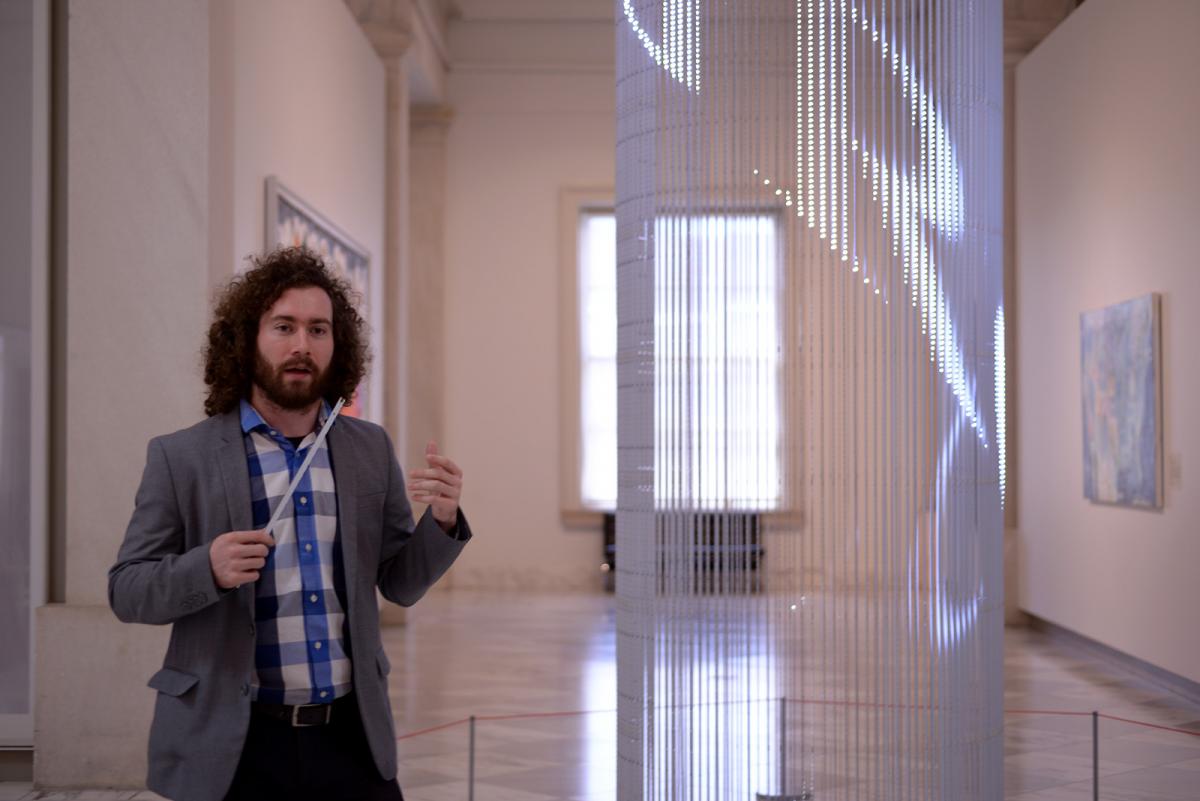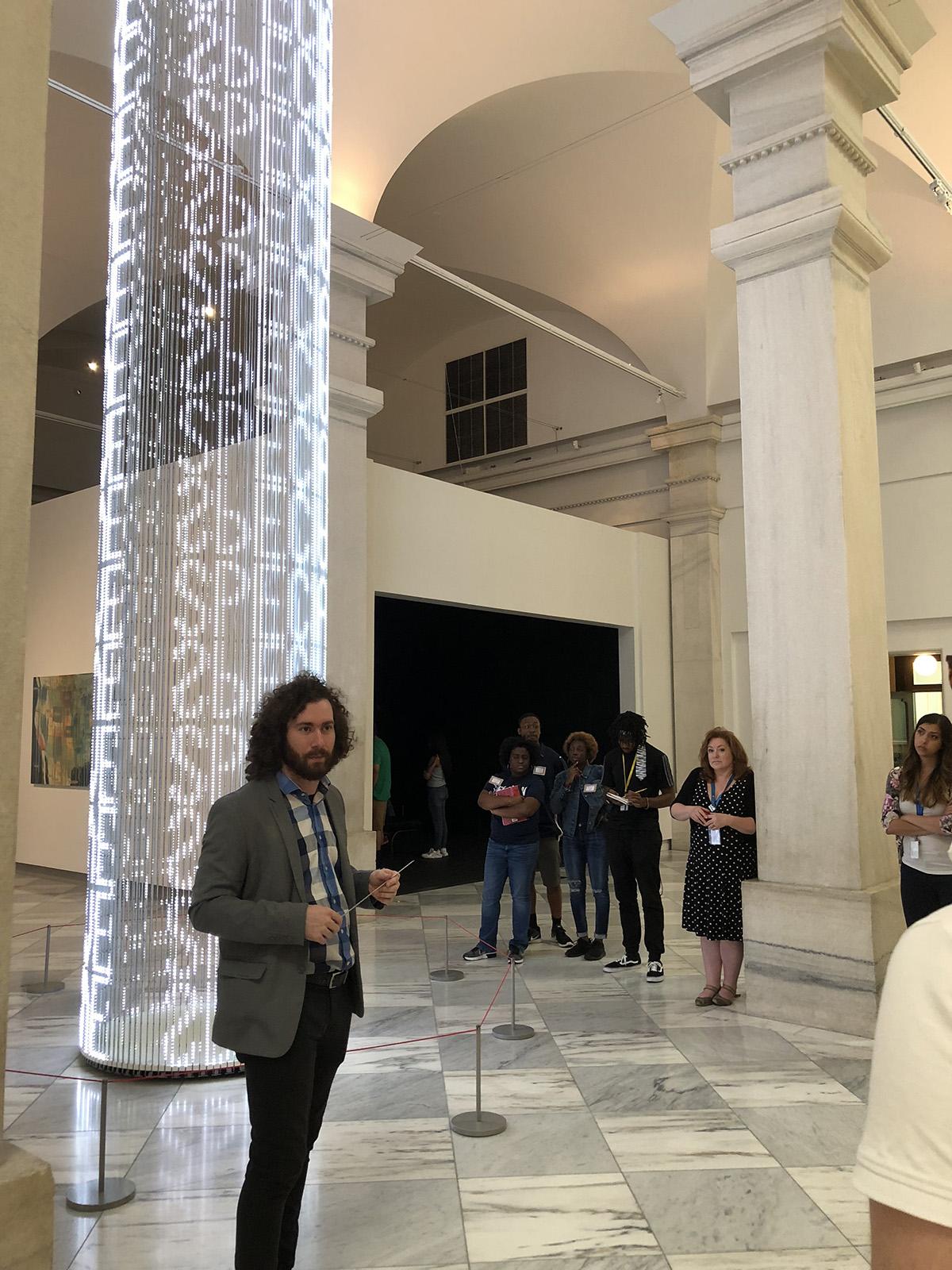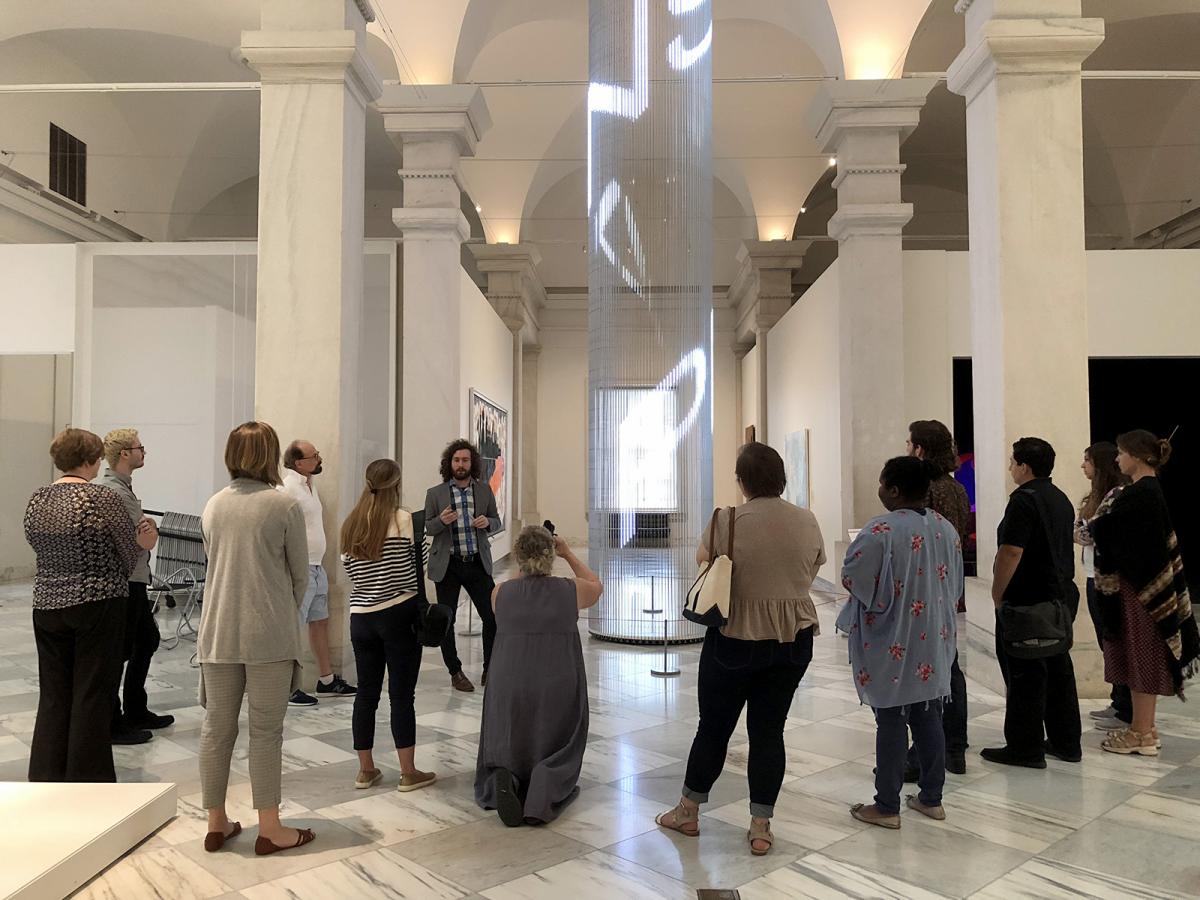I recently attended a Conservation Gallery Talk by Media Conservator, Dan Finn, on the challenges of conserving Jenny’s Holzer’s For SAAM, a 29-foot column that projects animated phrases onto the cylinder using LED lights. These are lit at varying speeds, giving the messages the illusion of movement. If you’re able to read fast enough to catch each word as it goes by, you’d see that the statements are assertive, such as "Abuse of power comes as no surprise" and "Money creates taste." The provocative texts come from some of Holzer’s best-known works.
The artwork is an example of time-based media (aka electronic media, new media, and variable media art). The category includes art that is analog or digital, software-based, or electrical in some way. Though not necessarily technological, performance art is also included in this group, as it is variable and “uncollectable.” How Finn conserves time-based media differs from how another conservator who deals with long-lived art forms might; the forms themselves demand a different focus. With sculptures and paintings, for example, the focus might be mostly on preserving the object itself through traditional techniques. However with time-based media, often, as with Holzer’s work, the message or experience of the art as a whole takes precedence over the form.
The version of Holzer’s work currently standing in the Lincoln Gallery is the second iteration of the sculpture, as due to more than a decade of wear, materials had to be switched out and replaced. The piece is dated the same as the first iteration that was erected in 2007, despite the changes to the physical structural materials. The re-fabrication was carried out by Brooklyn-based firm Parallel Development, in cooperation with SAAM staff and the artist’s studio, highlighting the collaborative approach that complex technological artworks often require. Parallel introduced some significant changes, including those that ease future maintenance. Instead of using solder, the segments are now attached by small brackets, which make it much lighter. Holzer considers the second iteration the same artwork, as the experience and meaning has not changed despite the change of materials.
Because of the electrical and digital components integral to For SAAM, there are several unique challenges that conservators are faced with. The cylinder is made up of 120 segmented strands of LED lights, all of which rely on a custom, fixed software that serves as the “brain” of the piece. It takes twelve motherboards (hidden in the ceiling!) and a computer system (also hidden!) to keep the program running. Sometimes just an individual light will fail, and other times, an entire strand or section will.
The program loops every seven hours, meaning that the LED lights are working overtime. When these lights die down due to extended use, there are often noticeable variations in color and brightness of the words projected. Thankfully, conservators at SAAM have come up with the clever plan to run replacement segments at the same time so that when one runs out or fails, it will match the rest of the lights in color and brightness. Dan Finn, other conservators, Holzer, and affiliated LED specialists have worked hard to ensure that the interaction of space, light, message, and shape have a dynamic impact on audiences.























